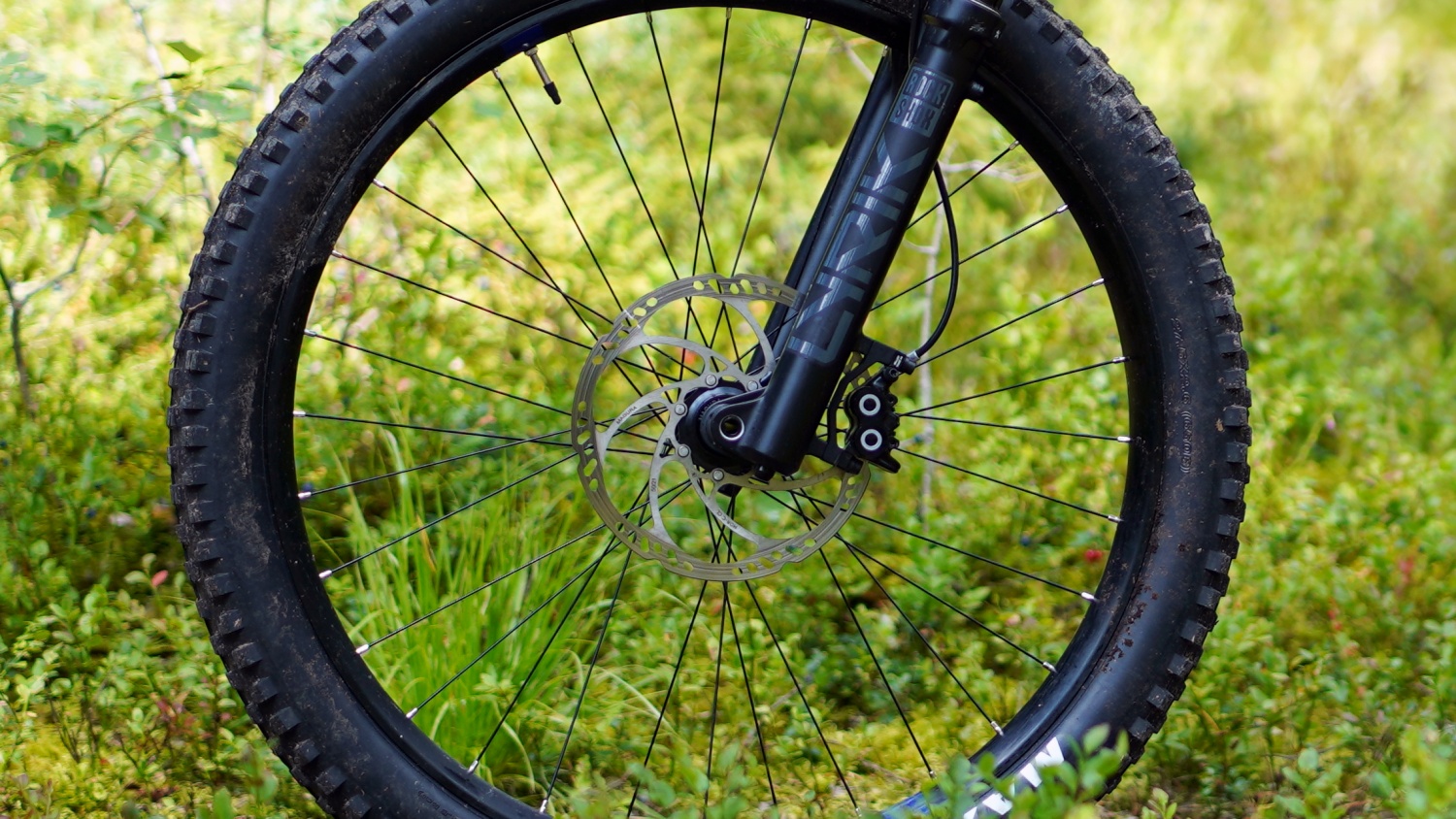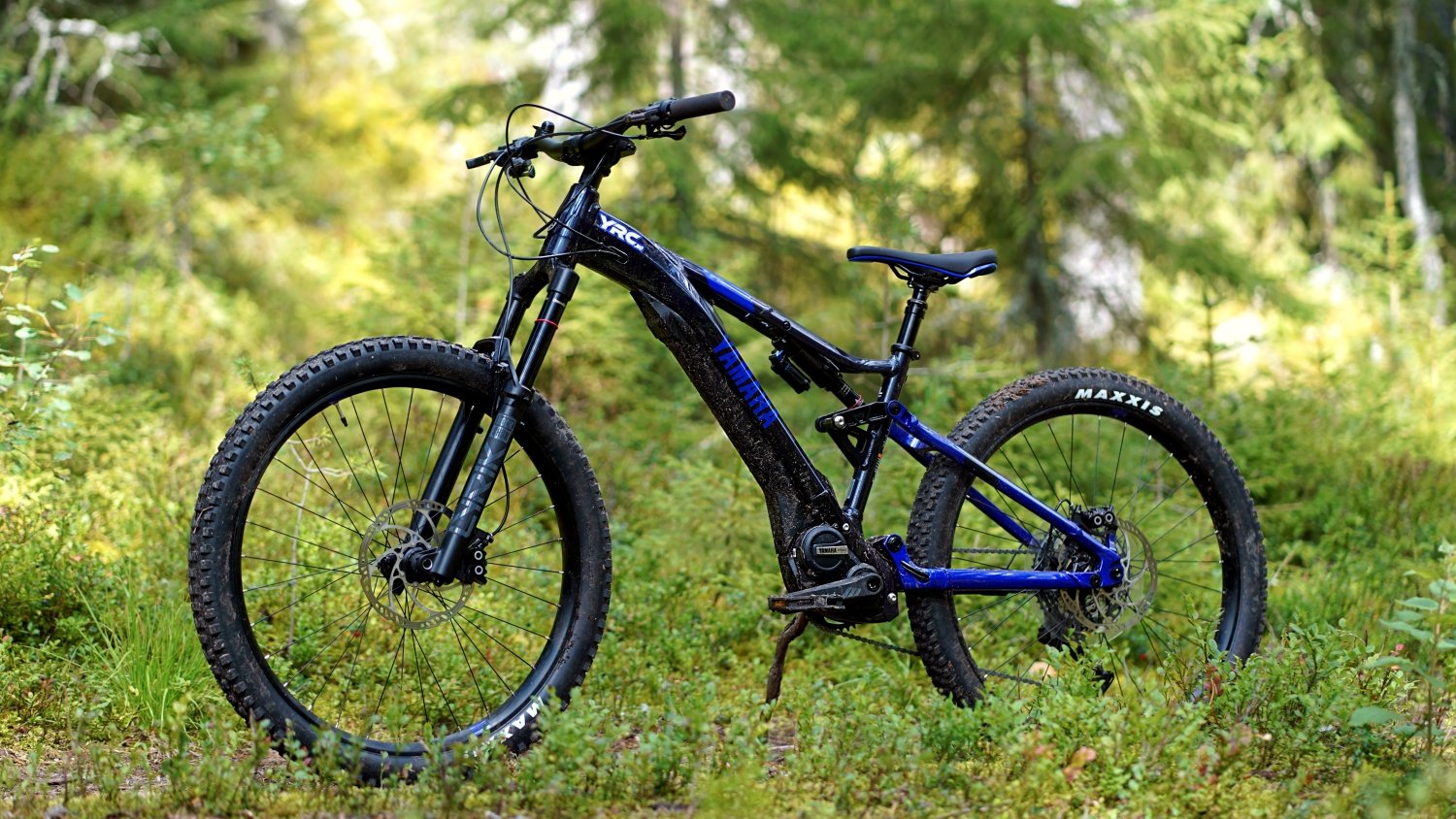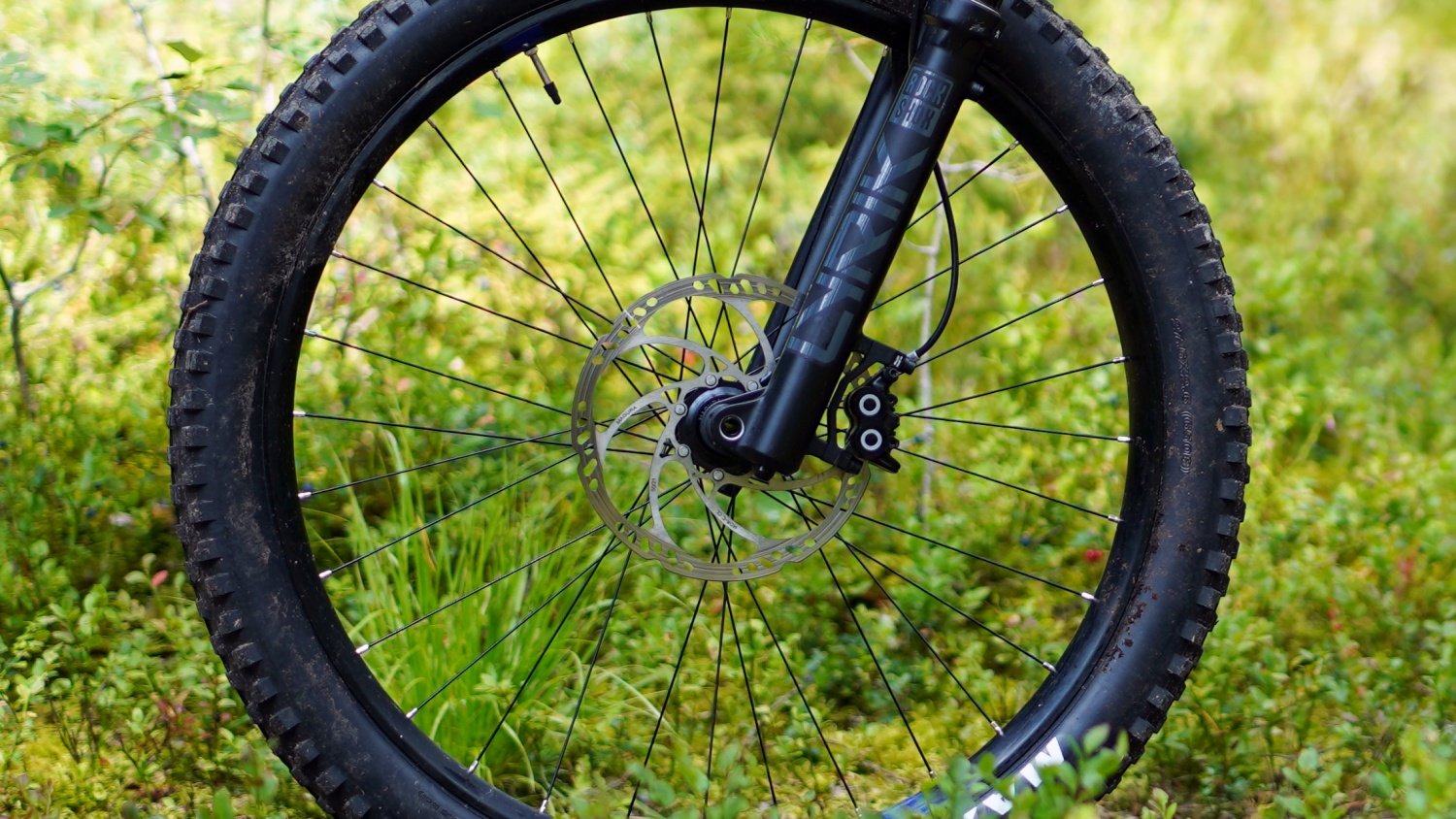- Intended Use
- Trail
- Motor
- Yamaha PW-X3 85 Nm
- Battery
- 500 Wh
- Fork Travel
- 160 mm
- Rear Travel
- 150 mm
- Weight
- 24.3 kg claimed, w/o pedals
- Price
- €5.900
Yamaha have been making ebikes for years. They created the first electric pedal assist motor all the way back in 1989, years before the rise of the ebike as we know it today. When the electric full suspension mtbs started appearing, Yamaha and Bosch were the dominating brands. And possibly Panasonic.
The Bosch motors were being used by more and more brands. But not the Yamaha, it was mainly used by Haibike and Lapierre plus a slightly altered version by Giant. We enjoyed riding the Yamahas, why didn’t more brands use them? I never found the answer, but there were rumors Yamaha was focusing on making their own ebikes.



But Yamaha hasn’t given up. The fact that they supply spare parts for their motors is a big advantage. And why wouldn’t they? Yamaha is already used to supplying spare parts for their motorcycles, why do it differently for the ebikes? Yamaha Racing Center tells us they’re able to service Yamaha motors on other brand bikes too.

Yamaha motors always were most powerful at lower pedaling frequencies. On previous motors, the power would start dropping somewhere between 70 and 90 rpm. And they’ve always made a grinding noise. It wasn’t an unpleasantly loud noise, and it didn’t get worse as cadence increased. All of this is fixed on the PW-X3. This is an easily controllable and compact motor, and it’s powerful above 90 rpm. The PW-X3 is a worthy competitor.


But that’s okay, not everyone wants shorter chainstays. 465 mm is among the longer rear ends, but it’s still fairly normal. This results in a slightly forward biased riding position. The advantage is a nice balance when climbing, it’s easy keeping the front wheel on the ground. And it helps us keeping some weight over the front wheel in the turns.

The most eye-catching part of the design is what Yamaha calls Dual Twin Technology. The rearmost part of the toptube splits in two, thus making creating extra space for the shock. This design allows for a very compact frame with a low standover height. The Dual Twin design is also found on the downtube. Yamaha did this to create space for the battery.
The MORO-07 frame geometry is quite average for normal trail bike. One might assume a 160 mm travel front and 150 mm travel rear bike is biased towards the descents. But the relatively short wheelbase at 1.206 mm for size M and the 66.2* headtube angle indicates this isn’t a downhill specialist. It’s more of an uphill specialist with the 465 mm chainstays.

A 70* seattube angle seems very slack. But this has to be the “actual seattube angle” and it doesn’t tell us a whole lot. It’s normal stating the “effective seattube angle”, the angle of a line drawn between the center of the crank axle and the top of the seattube. Yamaha doesn’t state this number, but it’s obviously more than 70*. We’ve got no complaints about the steepness.
The Yamaha Dual Twin design allows the battery to sit seemingly integrated in the frame. But it’s not hidden. The top of the battery is visible above the downtube. It’s not really apparent until the battery is removed. I think this is an interesting solution, one that I never thought of, and it doesn’t bring the same weight penalty.

But, like everything else, it’s a compromise. Yamaha designed the frame so the handlebars can be turned all the way, there is no block in the headset limiting the steering. This is possible thanks to a short downtube that attaches a bit back on the toptube. In our understanding, the combination of a short downtube and the battery integration means the bike hasn’t got room for a big battery. Yamaha make batteries with up to 720 Wh capacity, but the MORO-07 is limited to the smaller 500 Wh battery.


The same can be said about the Shimano XT 12-speed drivetrain. The Rockshox Lyric 160 mm fork is also more than what we expect for the money. The wide 40 mm internal with rims once again takes my memory back to the turn of the decade. Combined with nice Maxxis 27.5x2.6” rubber, the tyres are quite wide. This provides comfort and a nice float on lose surfaces, but wide tyres can sacrifice some precision when descending at speed.
Yamaha claims the MORO-07 is 24.3 kg without pedals. This is a nice weight for a well-priced full-power emtb. The smaller 500 Wh is one reason the weight and price is relatively low.


We’re used to shifting a lot when riding the earlier Yamaha motors, to make sure we’re always in the optimum cadence range that offers the most assistance. It reminds me of a turbo diesel engine that is very powerful over a short rev range. It’s not like that with the Yamaha PW-X3 though. We can upshift or downshift and vary the cadence without having the motor power drop significantly.





The Bosch motors were being used by more and more brands. But not the Yamaha, it was mainly used by Haibike and Lapierre plus a slightly altered version by Giant. We enjoyed riding the Yamahas, why didn’t more brands use them? I never found the answer, but there were rumors Yamaha was focusing on making their own ebikes.
The Yamaha MORO-07 is here
A few years later, in 2020/21, the Yamaha YDX-MORO was introduced. This was Yamaha’s first full suspension ebike. Where I live, we had to wait until 2023 to get a full suspension Yamaha emtb though. This bike is called Yamaha MORO-07 and it’s got the same frame and battery as the original MORO. We visited Yamaha Racing Center just outside of Oslo (Norway) to have a look at the bike. Among various motorcycles, we found a row of MORO-07s.A motor that can be repaired
In one end of the room was the workshop where they service both motorcycles and ebikes. We think it’s both important and great that the pedal assist motor can be service. Yamaha has lost market shares since the early days of ebikes. The Shimano and Bosch motors have taken much of the market. And that’s fine, they’ve got compact motors that ride well.But Yamaha hasn’t given up. The fact that they supply spare parts for their motors is a big advantage. And why wouldn’t they? Yamaha is already used to supplying spare parts for their motorcycles, why do it differently for the ebikes? Yamaha Racing Center tells us they’re able to service Yamaha motors on other brand bikes too.
The “new” Yamaha PW-X3 motor
Yamaha introduced the PW-X3 for 2022. You might not expect much from a new motor, considering how few brands are using Yamaha motors? It’s not much point having a serviceable motor if it doesn’t ride well. Fortunately, the PW-X3 is a very good motor.Yamaha motors always were most powerful at lower pedaling frequencies. On previous motors, the power would start dropping somewhere between 70 and 90 rpm. And they’ve always made a grinding noise. It wasn’t an unpleasantly loud noise, and it didn’t get worse as cadence increased. All of this is fixed on the PW-X3. This is an easily controllable and compact motor, and it’s powerful above 90 rpm. The PW-X3 is a worthy competitor.
A different design
The MORO-07 isn’t a high-tech, plastic-rocket looking machine. The main pivot for the chainstays looks a bit agricultural. I’m not saying the rear suspension kinematics is outdated, but the implementation reminds me of the previous generation emtbs. The chainstays could perhaps be attached a tad closer to the motor to reduce the rear-center.But that’s okay, not everyone wants shorter chainstays. 465 mm is among the longer rear ends, but it’s still fairly normal. This results in a slightly forward biased riding position. The advantage is a nice balance when climbing, it’s easy keeping the front wheel on the ground. And it helps us keeping some weight over the front wheel in the turns.
The most eye-catching part of the design is what Yamaha calls Dual Twin Technology. The rearmost part of the toptube splits in two, thus making creating extra space for the shock. This design allows for a very compact frame with a low standover height. The Dual Twin design is also found on the downtube. Yamaha did this to create space for the battery.
|
|
|
Yamaha MORO-07 geometry
The MORO-07 comes in three sizes. Riding a size M felt fine for me at 181 cm. Fredrik measures a few cm more and rode a size L. We would both probably choose the size M, but we often prefer a slightly small frame over one that is on the big side.The MORO-07 frame geometry is quite average for normal trail bike. One might assume a 160 mm travel front and 150 mm travel rear bike is biased towards the descents. But the relatively short wheelbase at 1.206 mm for size M and the 66.2* headtube angle indicates this isn’t a downhill specialist. It’s more of an uphill specialist with the 465 mm chainstays.
A 70* seattube angle seems very slack. But this has to be the “actual seattube angle” and it doesn’t tell us a whole lot. It’s normal stating the “effective seattube angle”, the angle of a line drawn between the center of the crank axle and the top of the seattube. Yamaha doesn’t state this number, but it’s obviously more than 70*. We’ve got no complaints about the steepness.
|
|
|
500 Wh battery
Aound 2019, many bikes went from an external to an internally integrated battery. I talked to people in the industry about how that could be done with a minimal weight penalty. Cutting a big hole in the downtube for the battery meant extra reinforcement of the frame was required. This lead to a weight increase of up to one kg.|
|
|
The Yamaha Dual Twin design allows the battery to sit seemingly integrated in the frame. But it’s not hidden. The top of the battery is visible above the downtube. It’s not really apparent until the battery is removed. I think this is an interesting solution, one that I never thought of, and it doesn’t bring the same weight penalty.
But, like everything else, it’s a compromise. Yamaha designed the frame so the handlebars can be turned all the way, there is no block in the headset limiting the steering. This is possible thanks to a short downtube that attaches a bit back on the toptube. In our understanding, the combination of a short downtube and the battery integration means the bike hasn’t got room for a big battery. Yamaha make batteries with up to 720 Wh capacity, but the MORO-07 is limited to the smaller 500 Wh battery.
Very well specced
An advantage of going with a 500 Wh battery is it keeps costs down. At 55.900 NOK, the MORO-07 is very well priced in Norway. I see it’s listed at € 5.900, so it may or may not be “cheap” in other markets. It’s cheap here though, and it’s being treated accordingly in this review. We’re simply surprised to see it’s got the Rockshox Superdeluxe Select+ shock and powerful Magura MT-5 brakes. These are components usually found on more expensive bikes.The same can be said about the Shimano XT 12-speed drivetrain. The Rockshox Lyric 160 mm fork is also more than what we expect for the money. The wide 40 mm internal with rims once again takes my memory back to the turn of the decade. Combined with nice Maxxis 27.5x2.6” rubber, the tyres are quite wide. This provides comfort and a nice float on lose surfaces, but wide tyres can sacrifice some precision when descending at speed.
Yamaha claims the MORO-07 is 24.3 kg without pedals. This is a nice weight for a well-priced full-power emtb. The smaller 500 Wh is one reason the weight and price is relatively low.
Riding trails
We don’t really notice the tyre width when we take the bike to the trails. The pine needles covered trails are surprisingly dry, considering how rainy this summer has been. Much of the ride is done at 25 kph, at speeds where there’s still lots of motor assistance, just before the motor cuts.We’re used to shifting a lot when riding the earlier Yamaha motors, to make sure we’re always in the optimum cadence range that offers the most assistance. It reminds me of a turbo diesel engine that is very powerful over a short rev range. It’s not like that with the Yamaha PW-X3 though. We can upshift or downshift and vary the cadence without having the motor power drop significantly.

